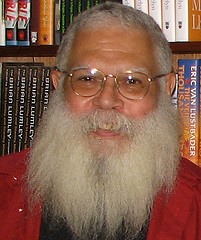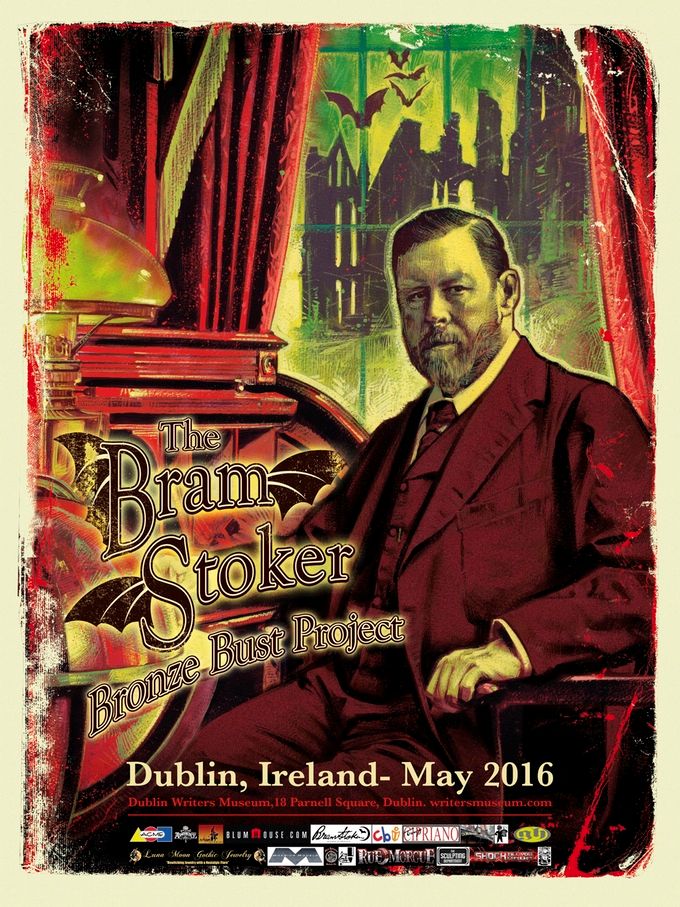(1) YOU NEVER KNOW WHAT YOU’RE GONNA GET. I appreciate the irony in the first line of Germain Lussier’s io9 post “The New Dune Movie Is Being Written By the Man Who Wrote Forrest Gump”:
But we don’t think that should worry you.
According to Lussier, Eric Roth, who won an Oscar for his adapted screenplay for Forrest Gump, has been hired to adapt the Frank Herbert novel Dune for director Denis Villeneuve.
(2) NEW AFRICAN SF AWARD. Since the Hugo announcement date was only known a few days ahead of time, the African Speculative Future Society may not have known that April 4 was a less-than-optimum date to announce the inaugural 2017 Nommos shortlist.
The categories are:
The Ilube Award for Best Speculative Fiction Novel by an African – 1000 USD prize,
The Nommo Award for Best Speculative Fiction Novella by an African – 500 USD
The Nommo Award for Best Speculative Fiction Short Story by an African – 500 USD
The Nommo Award for Best Speculative Fiction Graphic Novel by Africans – 1000 USD to be shared.
The award website says —
We have welcoming and inclusive definition of who is an African that includes children of an African parent. Read more about eligibility here.
The award has been funded for four years, by Mr Tom Ilube.
“Science fiction is important because it looks ahead to African futures. Fantasy and fiction based on traditional tales are important because they link us back to our forebears. Both are important for African development. I wanted to make sure that the explosion of African science fiction gets the recognition it deserves.” Mr Tom Ilube.
The first award ceremony will be held at Aké Festival in Nigeria, November 2017. After that they hope to alternate the location of the awards ceremony between West and East Africa.
Here are links to the Short List and the rest of the nominees in all 4 categories:
- Novel Short List and Long List
- Novella Short List and Long List
- Short Story Short List and Long List
- Graphic Novel Short List and details
(3) OLD OPERA HAS NEW ACTS. Cora Buhlert couldn’t find what she liked 20 years ago, but there’s enough good stuff now for her to be writing about “The Space Opera Resurgence”.
I didn’t like any of those books. But I was an SF fan and a space opera fan and this was all the space opera there was, with very few exceptions (mostly published by Baen Books, which are notoriously difficult to find in Europe). So I kept trying the highly regarded New Space Opera of the early 2000s, until I found myself standing in the local Thalia store, the latest offering of New British Space Opera subgenre in hand (it was this one – I remember the cover very clearly), when I suddenly dropped the book to the floor and exclaimed, “Why do I keep buying this shit? I don’t even like these books.” So I turned my back on New British Space Opera and on science fiction altogether (I did put the book back on the shelf first) and read other genres for a few years, until I came back in a roundabout way via urban fantasy and science fiction romance and found a whole universe of SFF books that weren’t on the radar of the official genre critics at all.
Now, some ten to fifteen years later, there is a lot more space opera on the shelves than back in the early 2000s. It’s also a lot more diverse the than just pale Banks clones. Nor is it just written by white, overwhelmingly British dudes – indeed, some of the best space opera of today is written by women and writers of colour. And even some of those authors whose novels almost put me off science fiction altogether some ten years ago are writing much more enjoyable works these days. …
(4) MAIL CALL. It’s not easy to get letters from the year 1962 unless you’re The Traveler. Galactic Journey today unveiled – “[April 5, 1962] Pen Pals (Letter Column #1)”. The first missive comes from University of Arizona student Vicki Lucas….
Of course, to pay the tuition and room & board, I also take in ironing, do tutoring, deliver newspapers, etc., and they helped me get a student loan. It’s been a real eye-opener to go to school here. Now I know what “scholarship” means. At the University of Arizona, from which I transferred last year, I did have some great learning experiences, but nothing as rich as this.
Not that I didn’t have some great experiences at UA, meeting an English Professor who is an avante-garde composer (Barney Childs), and since I worked in the Fine Arts College I went to most concerts & saw the harpsichord played for the first time (double keyboard!) & heard Barney’s music played. (I admit, I have a crush on him — see the enclosed photo.) And then I’ve been to San Francisco & seen jazz trumpeter Miles Davis & a lot of other stuff….
(5) CAMESTROS FELAPTON EXPLAINS IT ALL TO YOU. Thank goodness somebody can. In “Hugo 2017: How to vote for best series” he looks at 8 different approaches to dealing with the vastness of the Hugo nominated series. Sure, 8 is also a lot — just be grateful he didn’t try to match the number of ways Cyrano described his nose.
The issue is that Best Series is not unlike Best Editor Long Form – the normal way of voting in the Hugo Awards doesn’t work (read the relevant stuff and vote). However, unlike Best Editor Long, best series at least has accessible information and works. The problem is that it is way too much volume of stuff to evaluate if you haven’t already been following the series in question. So here are some approaches to choose from.
(6) CHOP CHOP. Shouldn’t Wolverine co-creator Len Wein be getting a cut of this?
A medical clinic in the Philippines is using an unusual mascot to advertise its circumcision service: claw-bearing X-Men super hero Wolverine.
The advertisement for Dionisio M. Cornel Memorial Medical Center in Antipolo features an image of Hugh Jackman as the adamantium-clawed character he played in the X-Men and Wolverine films next to text promoting the clinic’s circumcision service.
https://www.instagram.com/p/BSRvd73lmN4/
(7) RED ALERT. At Nerd & Tie Trae Dorn wants to know “What the Heck is Even Happening With AnachroCon Right Now?”
The Atlanta, GA based convention AnachroCon might be more aptly named “AnarchoCon” these days. Earlier this week the convention’s Chair and legal counsel Sarah Avraham stepped down in what sounds like an extremely complicated situation.
In a public Facebook post Avraham detailed the reasons for her departure, and while you should really read that post in its entirety, I’ll do my best to summarize it. It starts when Avraham was approached by William and Cindy MacLeod in the spring of 2016 to take over the event in an attempt to rehabilitate the convention’s image and get it back on track financially.
Because man, this con needed help….
(8) ON HOLD. Nerd & Tie is also reporting that “One Month After Cancellation, Multiple Parties Still Waiting For Refunds From Lebanon MEGA Con:.
This last weekend would have been the second annual Lebanon MEGA Con, if the Missouri based convention hadn’t announced its cancellation just one month before. While organizer Will Peden did say that everyone owed money would be paid, some parties are waiting for those promises to be fulfilled.
(9) TODAY IN FUTURE HISTORY
- April 5, 2063 — The day the Vulcans landed. According to Memory-Alpha:
First Contact Day was a holiday celebrated to honor both the warp 1 flight of the Phoenix and first open contact between Humans and Vulcans on April 5, 2063 in Bozeman, Montana
(10) TODAY’S BIRTHDAY BOY
- Born April 5, 1917 — Robert Bloch
[Apr. 5, 1962] Happy 45th birthday, sf author and creator of Psycho, Robert Bloch! https://t.co/GjfLbO3JGd pic.twitter.com/J4BtA3rLIU
— Galactic Journey News (@journeygalactic) April 5, 2017
I recognize Bob Tucker on the left. Who is the woman on the right? The photo is from a 1959 party in Chicago.
(11) DELIBERATIONS CONTINUE. The Shadow Clarke Jury carries on a discussion of the books they’d like to see considered for the Clarke award.
It does not seem surprising that reading Don DeLillo’s novel Zero K, in which an estranged son accompanies his tycoon father to the threshold of his journey into eternity, brought those memories of Cold Lazarus especially rushing back. Straddling the millennium, both [Dennis] Potter’s final teleplays and DeLillo’s sixteenth novel have a leached-out, end-times quality that puts human mortality centre stage and refuses to look away. That Potter’s scripts – almost a quarter-century old now and written while SF was still very much a pariah literature – leap naked into the science fictional abyss, while DeLillo’s novel appears to negate, to brush aside the very notion of science fiction altogether, seems just one further irony.
Imagine a table laden with all the food you can think of; things you like and things you don’t like; cuisines from all around the world; the fresh and the fast; three thousand calorie freak-shakes next to organic kale salads; dessert piled on top of nachos sitting on a bed of pears. The table is groaning, under the physical and the metaphorical weight of the feast. It’s wonderful and disconcerting and a bit horrifying and deliciously tempting at the same time. This is the gastronomic equivalent of Cathrynne M. Valente’s Radiance, a virtuoso outpouring of language, style, trope and intertext fit to overwhelm any appetite. It took close to a week for me to sit down and start this review after I finished the book; I needed that long to digest it. If you like your novels spare or clean this one probably isn’t for you.
His claim directly addresses the central conceit of the novel that the networks and routes by which African-American slaves escaped to the free states and the North exists as an actual underground railroad with stations and steam locomotives on rails. However, his mistake lies in imagining that the workings of the railroad can be reduced to information as legible as a map and a timetable. Earlier in the novel, when Cora visits this particular ‘ghost tunnel’ for the first time with the railroad operative, Royal, she reflects that the necessary secret of the railroad is not a bad type of secret but rather an intimate part of the self that is central to personal identity: ‘It would die in the sharing.’ The enigma of the railroad, as Royal observes, is that ‘it goes everywhere, to places we know and those we don’t’. The challenge it presents is not to classify it as a system of knowledge but to figure out both how it connects the different selves who use it and where it might lead to.
The Man Who Spoke Snakish is easily the least traditionally science fictional of my shortlist selections: not only does it feature no rockets, but it’s set firmly in the past (and is more about pasts than futures) and it includes talking snakes and something very much like a dragon. In the sense that science fiction is defined by the presence or absence of received ideas and familiar imagery—that is, using the least science fictional definition of science fiction—it would not be considered science fiction.
(12) A LITTLE SMACK. Fusion says justice has been served – “Black Panther and Ms. Marvel Nominated for Hugo Awards Days After Marvel VP Blamed Them for Sales Slump”.
On Tuesday morning, the finalists for the 2017 Hugo Awards (the Oscars of sci-fi and fantasy writing) were announced by the World Science Fiction. Unsurprisingly, collected volumes of Marvel’s critically acclaimed Black Panther and Ms. Marvel series were both nominated for Best Graphic Story.
These nominations come just days after Marvel’s Vice President of Sales, David Gabriel, went out of his way to blame Marvel’s lagging sales on comics—like Black Panther and Ms. Marvel—starring people of color and women. Suffice it to say that the optics of this whole thing don’t reflect well on the publisher, but the Hugo nominations send a telling message to Marvel about just how the public actually feels about its “diverse books.”
(13) REACTION POST. Abigail Nussbaum catalogs all the emotions she’s feeling after seeing the 2017 Hugo shortlist, beginning with happiness about her Best Fan Writer nomination, and continuing down the spectrum til she reaches —
Frustration, because the puppies’ ongoing presence on the ballot, even under extremely reduced circumstances, means that it continues to be impossible to talk about the nominees as their own thing, rather than a reaction to an attempted fascist takeover. There’s a lot to praise about this year’s ballot, including the continued shift towards a more diverse slate of nominees, but in the short fiction categories in particular, the Hugo has once again thrown up a fairly middle-of-the-road selection. Most of these stories aren’t bad, but quite a few of them are meh, and it would be nice to once again be able to have a proper discussion of that. Instead, we’re all still in bunker mode, still cheering the fact that publishable fiction was nominated for the genre’s most prestigious award, which increasingly seems like a low bar to clear.
(14) PUPPY ANTENNAE ACTIVATED. Cora Buhlert sets things in context and delivers a thorough set of first impressions about the Hugo ballot.
The best novel category looks excellent. We have the sequels to two previous Hugo winners in the category, Death’s End by Liu Cixin and The Obelisk Gate by N.K. Jemisin respectively. We have the long awaited and critically acclaimed debut novels by two accomplished short fiction writers, All the Birds in the Sky by Charlie Jane Anders and Ninefox Gambit by Yoon Ha Lee respectively. We have a highly acclaimed debut novel with a very unique voice, Too Like the Lightning by Ada Palmer, as well as the sort of sequel to 2014’s highly acclaimed debut novel with a unique voice, A Closed and Common Orbit by Becky Chambers. A Closed and Common Orbit, Too Like the Lightning and Ninefox Gambit were also on my ballot, and I’m looking forward to reading the remaining three. And those who worry that science fiction is about to die out and be swamped by fantasy, which will inevitably lead to the collapse of the West or something, will be pleased that four of the six nominees in this category are unabashedly science fiction. The Obelisk Gate is an edge case, while the only clear fantasy novel is All the Birds in the Sky and even that one has a mad scientist character. Diversity count: 4 women, 2 men, 3 writers of colour, at least 3 LGBT writers, 1 international writer in translation, 0 puppies.
(15) TUESDAY’S HUGO NEWS. H.P. at Every Day Should Be Tuesday features a picture of a dog in his more Puppy-sympathetic coverage of the 2017 Hugo Awards finalists.
… I am very gratified to see Cixin Liu back where he belongs Death’s End a finalist for Best Novel. I loved it, as you can probably tell by my overenthusiastic review. I thought The Dark Forest was robbed, and I voted for The Three-Body Problem as the Best Novel two years ago. I would have loved to have seen the entire series go up for an award, but oh well. It perhaps says something about the incestual nature of the Hugo voting that the two books in the series edited by the popular Ken Liu were finalists, and the one that wasn’t didn’t even finish in the top 15 nominations….
The Rageaholic was a finalist last year, but I only saw my first few videos within the last month or so. And for the most part, I have no interest in watching his videos on video games or movies or politics. If only for the main reason I don’t watch many YouTube videos or listen to many podcasts. I ain’t got time for that stuff. But Razorfist has an encyclopedic knowledge of comics and Elric of Melnibone. And he’s got a great shtick. Usually in black-and-white, decked out in mirrored sunglasses and a leather jacket, long hair, wall covered in posters behind him. Complete with some metal thrown-in to start and finish things off, and a rapid-fire, eloquent, profane delivery.
H.P. also identifies himself as a contributor to the Castalia House blog.
(16) HUGO BY OSMOSIS. The nominations have inspired J.D. Brink’s latest theory.
And John Picacio has been nominated for best professional artist. I’m pretty darn sure (though not 100%, mind you) that he and I shared a day at Dragon’s Liar comics in San Antonio signing stuff on Free Comic Book Day a few years ago. We sat right next to each other.
So by sheer proximity, I should be getting a Hugo award, if not this year, than next year
(17) IF I WERE A RICH MAN. Who knew I wouldn’t have to wait til I made a million dollars before seeing my name in Forbes? They published the Hugo nominees.
(18) MOST IMPORTANT CATEGORY. Jude Terror’s account of the nominations for Bleeding Cool is intentionally myopic: “Marvel And Image Split Hugo Awards Comics Category, Shut Out Other Publishers”.
Worldcon has released the finalists for the 2017 Hugo Awards, the science fiction and fantasy awards named after Amazing Stories founder Hugo Gernsback. We’re pretty sure that’s the book Spider-Man first appeared in. In true snooty comics website fashion, we’ll only talk about the things that relate to comic books and ignore everything else.
First, in the most important category, Best Graphic Story (that’s fancy-speak for comics), nominees included Marvel’s Black Panther, Ms. Marvel, and The Vision, two of the most successful and acclaimed books the likes of which Marvel “has heard” people don’t want anymore, and one written by a guy who “rode off into the sunset.” Monstress, Paper Girls, and Saga from Image took the other three slots, shutting out all other publishers. Shockingly, no prominent editors from the superhero comics community earned nominations in any of the editorial categories, though Sana Takeda, a familiar name to comics readers, did move the needle with a spot on Best Professional Artist list.
Dan Slott failed to secure a nomination in Best Fan Writer despite writing some of the most acclaimed Doctor Who fan fiction around in Silver Surfer, though Doctor Who’s Christmas Special, The Return of Doctor Mysterio, was nominated under the Best Dramatic Presentation (Short Form) category, which is a fancy way of saying “TV show.” Yes, we know we’re breaking out “only talk about comics” rule, but what could be more “comics website” than that?! Sir Robert Liefeld’s greatest creation, Deadpool, earned a nomination in the Best Dramatic Presentation (Long Form) category, which is a fancy way of saying “movie.”
(19) VIRTUAL VISON. “Astronomers just turned on a planet-size telescope to take a picture of a black hole” – Vox has the story. (No, not that Vox.)
Every image you’ve seen of a black hole is an illustration. A giant “virtual” telescope may change that….
We’ve never seen a direct image of a black hole. But if an audacious experiment called the Event Horizon Telescope is successful, we’ll see one for the first time.
Why we’ve never seen an image of a black hole
The biggest problem with trying to detect a black hole is that even the supermassive ones in the center of galaxies are relatively tiny.
“The largest one in the sky [is] the black hole in the center of the Milky Way,” Dimitrios Psaltis, an astrophysicist at the University of Arizona, said in 2015. “And taking a picture of it would be equivalent to taking a picture of a DVD on the surface of the moon
(20) THAT REVOLUTIONARY NEW IDEA FOR SELLING BOOKS. The Verge has another Amazon bookstore on its radar screen – it will be the third in New York.
Amazon has confirmed plans to open a brick-and-mortar bookstore across from the Empire State Building, bringing its total number of announced but as-of-yet unopened stores in New York City up to three.
Publisher’s Weekly reports that a sign reading “Amazon Books Coming Soon” has gone up in the 34th Street storefront, adding that an Amazon rep said the store will open this summer. The store has also been added to the Amazon Books website. This would presumably make it Amazon’s second store in New York. A location in Columbus Circle’s Time Warner Center (just off of Central Park) was announced in January, with the intent to open this spring.
Another, in Hudson Yards, the still-under-construction $20 billion shopping and luxury residential complex on Manhattan’s far west side, was widely reported last summer — with plans to launch alongside the rest of the development’s new stores in 2018 or 2019.
(21) CUTTING EDGE. Here’s the King Arthur: Legend of the Sword final trailer. The film will be out May 12.
[Thanks to John King Tarpinian, JJ, Carl Slaughter, Martin Morse Wooster, Cat Eldridge, and Mark-kitteh for some of these stories. Title credit goes to File 770 contributing editor of the day Soon Lee.]







